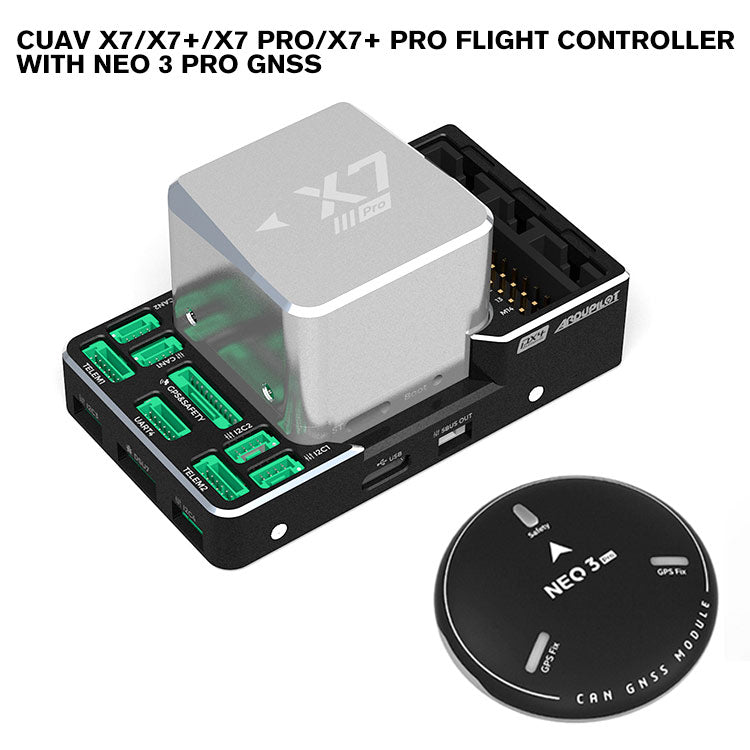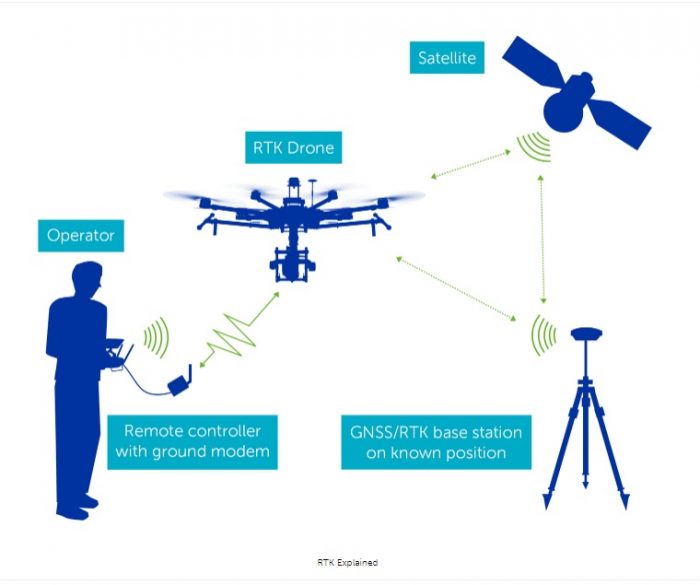The Prospective of UAVs: SparkNavi Drone Flight Controller and GNSS/INS Made in Taiwan
The Prospective of UAVs: SparkNavi Drone Flight Controller and GNSS/INS Made in Taiwan
Blog Article
Discovering the Duty of Drone Trip Controllers in Enhancing Trip Stability and Navigating Efficiency
The development of drone modern technology has substantially boosted the significance of trip controllers, which offer as the brain of these aerial cars. By integrating real-time data from an array of sensing units, flight controllers improve trip security and navigation efficiency, ensuring that drones can operate smoothly even in complicated settings. This discussion will certainly check out the key components that add to these enhancements, in addition to the implications for the future of independent flight. What advancements exist ahead that could further change the capacities of drone trip controllers?

Comprehending Flight Controllers
Flight controllers are integral elements in the functioning of drones, acting as the minds that manage and maintain trip procedures. These sophisticated tools procedure data from different sensing units, consisting of accelerometers, gyroscopes, and GPS, to guarantee that the drone preserves its designated trip path. The flight controller translates this information and executes commands based on pre-defined formulas, making it possible for the drone to react to environmental adjustments, such as wind or barriers.
The key feature of a flight controller is to maintain security throughout trip. It achieves this by making real-time modifications to the drone's motors and control surface areas, making sure balance and control. In addition, modern-day trip controllers incorporate innovative attributes such as waypoint navigating, enabling automated flight courses and improved operational performance.
Recognizing the architecture of flight controllers is essential for both specialists and hobbyists. As innovation breakthroughs, trip controllers have become much more qualified and small, incorporating man-made knowledge to adapt and boost decision-making procedures to intricate flight situations.
Key Parts of Flight Security
Accomplishing optimal flight security in drones relies on a number of vital components that operate in concert to make certain smooth and regulated operations. Central to this security is the trip controller itself, which refines information from various sensors to preserve the desired trip mindset. This consists of accelerometers and gyroscopes that gauge motion and alignment, permitting for real-time modifications to the drone's placement.
An additional crucial part is the digital rate controllers (ESCs), which manage the power supplied to the electric motors. By carefully adjusting motor rates in feedback to trip controller commands, ESCs aid preserve balance and combat disturbances brought on by wind or unexpected activities.
Furthermore, the style of the drone's framework plays a critical duty in trip stability. A well-structured framework lessens resonances and enhances the overall aerodynamic profile, adding to smoother flight features. Lastly, the combination of sophisticated algorithms within the flight controller help in anticipating adjustments, making certain a receptive and versatile trip experience.
With each other, these components form a natural system that improves a drone's stability, permitting precise maneuvering and improved efficiency in various flight conditions.
Navigating Effectiveness Methods
Performance in navigation is necessary for enhancing drone procedures, especially in intricate environments. Efficient navigation techniques improve the capability of drones to pass through tough surfaces and stay clear of obstacles, therefore enhancing functional efficiency and security.
One famous technique is the application of sophisticated GPS and inertial dimension units (IMUs) that offer precise place tracking and alignment data. These modern technologies allow drones to determine optimal flight courses in real-time, taking into consideration different variables such as wind problems and possible obstacles.
One more strategy entails using formulas for path preparation and optimization. Algorithms such as A * and Dijkstra's algorithm can be deployed to determine one of the most efficient route while reducing energy usage and flight time. Additionally, integrating artificial intelligence designs can make it possible for drones to adaptively pick up from their atmospheres, boosting navigating capabilities with experience.

Influence On Autonomous Drones
The combination of advanced navigation strategies has profoundly changed the abilities of self-governing drones, enabling them to run recommended you read with greater freedom and accuracy. SparkNavi drone flight controller and GNSS/INS made in taiwan. These enhancements are largely credited to sophisticated flight controllers that use real-time find more info data handling and sensor combination, allowing drones to navigate intricate atmospheres perfectly
The effect on autonomous drones expands beyond simple navigating; it encompasses boosted barrier evasion, improved stability throughout dynamic conditions, and raised goal reliability. By leveraging algorithms that integrate maker learning and expert system, drones can adjust to altering circumstances, making notified choices that maximize their trip paths while decreasing threats.
Moreover, the execution of robust trip controllers has helped with the implementation of intricate jobs, such as aerial inspections, shipment services, and farming monitoring, with marginal human treatment. This ability not just improves procedures however also decreases human mistake, consequently enhancing general security.
Consequently, the operational extent of self-governing drones has actually broadened substantially, making them indispensable devices in various markets. Their capacity to perform efficiently in diverse situations highlights the vital function that advanced trip controllers play in forming the future of unmanned airborne systems.
Future Trends in Trip Control
Regularly, advancements in flight control innovation are positioned to redefine the landscape of drone procedures in the coming years. Arising trends suggest a considerable shift towards enhanced expert system (AI) integration, allowing trip controllers to refine real-time data more successfully. This evolution will certainly promote improved decision-making capacities, allowing drones to adapt to vibrant ecological problems autonomously.
In addition, the execution of artificial intelligence formulas is anticipated to improve anticipating maintenance, therefore reducing downtime and extending the lifecycle of drone parts. This proactive technique to upkeep will certainly be vital as drone applications expand across various industries, from agriculture to logistics.

.jpg)
Lastly, improvements in secure interaction methods will address safety and security and regulative problems, guaranteeing that drones can run seamlessly in overloaded airspaces (SparkNavi drone flight controller and GNSS/INS made in taiwan). Collectively, click over here now these patterns aim towards a future where flight control systems are not only smarter and extra efficient yet likewise capable of operating securely in an increasingly incorporated airspace
Verdict
In verdict, drone flight controllers are indispensable to improving trip stability and navigating effectiveness via the sophisticated processing of sensing unit information. By preserving optimal trip perspectives and employing innovative formulas for path optimization and challenge avoidance, these controllers significantly add to the autonomy and operational safety and security of drones. As technology continues to advance, further improvements in trip control systems are expected, promising improved efficiency and increased capacities in the world of unmanned airborne cars.
By incorporating real-time data from a variety of sensors, flight controllers improve flight stability and navigating effectiveness, making sure that drones can run efficiently also in intricate atmospheres.Flight controllers are essential parts in the functioning of drones, offering as the minds that handle and maintain flight operations. Furthermore, modern trip controllers integrate sophisticated attributes such as waypoint navigating, permitting for automated flight paths and improved operational efficiency.
Central to this security is the flight controller itself, which refines information from numerous sensing units to maintain the preferred trip attitude.In final thought, drone flight controllers are important to boosting trip security and navigation performance via the innovative processing of sensor data.
Report this page